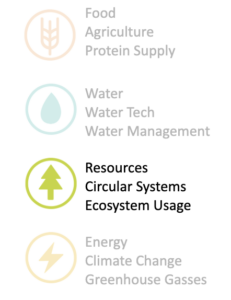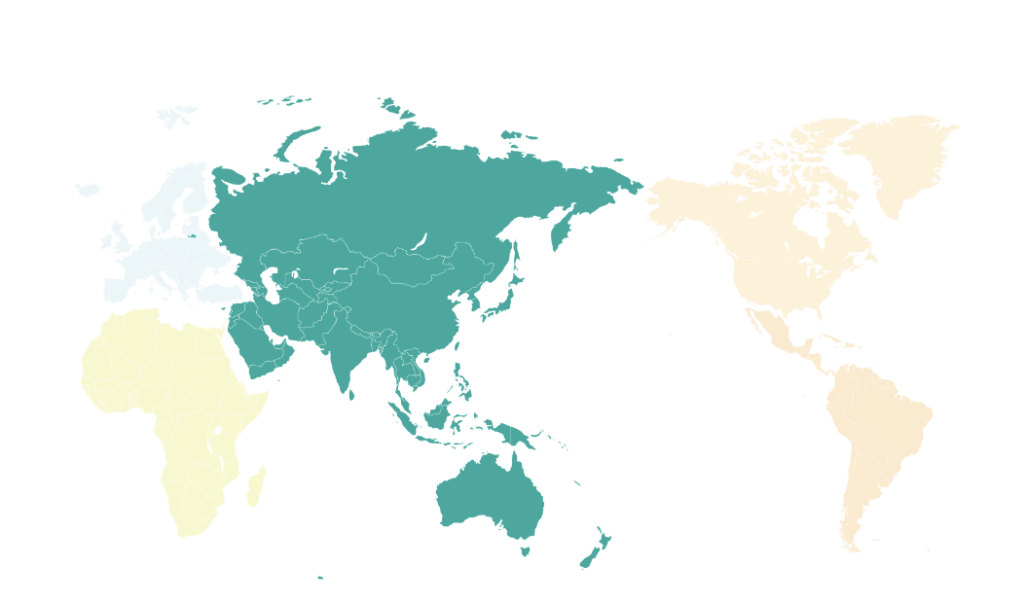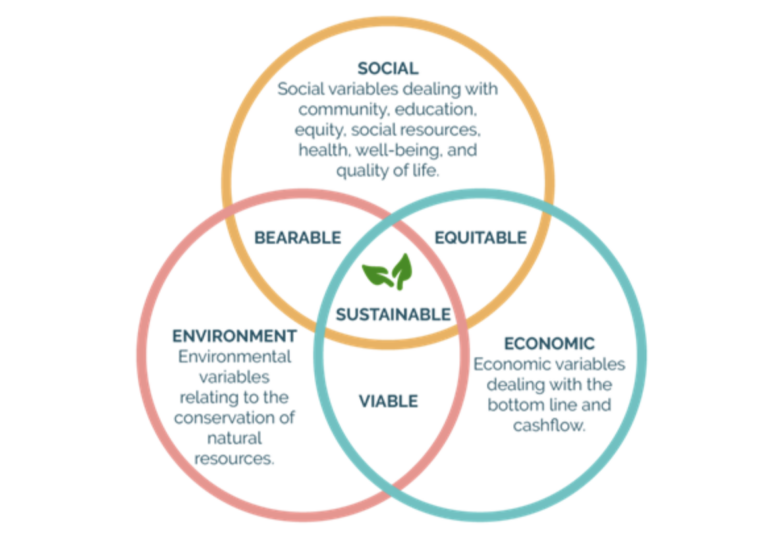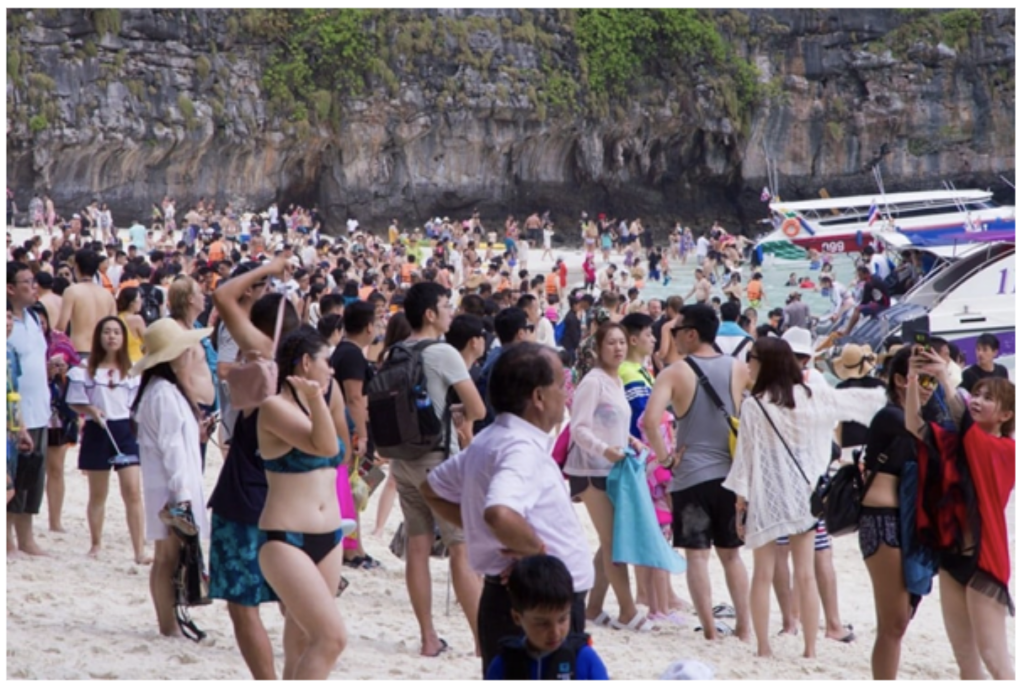Main Theme


Sub-theme: over-tourism; sustainable tourism; travel; overconsumption; entertainment
Abstract
Over-tourism is the congestion or overcrowding from an excess of tourists at the same time and place, resulting in conflicts with local people and their environment. It has been linked with negative environmental impacts ranging from high carbon emissions, hyper-consumerism, and wildlife and biodiversity loss. What if people were made aware of alternative choices that could help ease the carbon footprint of their vacation by making greener choices across the travel and also reducing congestion and footfall?
This is called sustainable tourism, where travelers are educated about choices and also have easy access to them. These choices are across the 4 major phases of a tour (vacation): local mobility, long-distance travel, accommodation, and experiences.
Currently, sustainable tourism has less than 10% of the market share in the region. For sustainable tourism to have a climate action impact, the share would need to grow by one-third over the next decade. Innovations in Asia-Pacific are tackling this, from making low-impact local mobility solutions more widespread, targeted sustainable living spaces such as Sumba making accommodation more resource friendly, and platforms like Klook, used by more than 5 million people, look to reduce emissions across tourism’s touchpoints.
Sustainable Development Goals Chart

Main Highlights
Climate impact of over-tourism in Asia-Pacific
- Asia-Pacific accounts for about one-fourth of all tourist arrivals globally
- Tourism accounts for up to 5% of total GHG emissions globally
- At CAGR 6%, Asia-Pacific is experiencing the fastest rate of over-tourism in the world
- The unsustainable outcomes are across the four major phases of a tour (or vacation): local mobility, long-distance travel, accommodation, and experiences
Interventions for unsustainable tourism in Asia-Pacific
- Sustainable tourism maximizes the positive impacts of tourism as an activity across environmental, social, and economic outlooks
- A couple of examples of possible approaches or interventions:
- Enabling low-carbon air travel accessible and affordable
- Promoting local culture, food, and experiences
Sustainable tourism innovations in Asia-Pacific
- Initiatives from large organizations like UNWTO, MIST, and Booking.com, are encouraging and funding such innovations in the sector
- Sumba Hospitality Foundation has a fully sustainable hotel-cum-school campus model
- Viavii leads to 25% revenue increase for local tourism businesses
Impact of sustainable tourism innovations
- Sustainable living spaces (like that of Sumba & GHE) and improvements in energy efficiency will help keep the overall environmental impact low
- Tourism platforms like Klook have the potential to reduce direct emissions by a factor of one-third
A systems perspective on sustainable tourism in Asia-Pacific
- Lack of accurate data about sustainability in tourism is challenging
- Sustainable tourism needs to gain at least one-third of the market share by 2032
- Balanced combination of innovations need to address awareness and behavior change
Case Overview
Asia-Pacific has the second largest (after Europe) volume of tourist arrivals, accounting for about one-fourth of all arrivals globally. Like Europe, Asia-Pacific has approximately doubled its tourist arrival volume since 2010. This follows the UNWTO (United Nations World Tourism Organization)’s prediction that the region will have one-third of the global market share by the year 2030.
Tourism is strongly linked with high carbon emissions, hyper-consumerism, and wildlife & biodiversity loss. The unsustainable outcomes are across the four major phases of a tour (or vacation): local mobility, long-distance travel, accommodation, and experiences. At the same time, Asia-Pacific tourism strengthens global and local economies. The region accounts for one-third of global spending in tourism and contributes about 10% (on average) to the region’s GDP.
In the long run, the negative environmental impact will outweigh the impact on the economy. Climate change is already affecting tourism, such as through extreme weather events. For tourism to become more sustainable, it is important to understand the climate impact trends of tourism and potential interventions in the region.
Climate impact of over-tourism in Asia-Pacific
Over-tourism is the congestion or overcrowding from an excess of tourists at the same time and place, resulting in conflicts with local people and their environment. Asia-Pacific is experiencing over-tourism with a CAGR of 6% in tourist arrivals since 2005 – the fastest growing in the world. As a result, the ongoing over-tourism is actively contributing to climate change in the region.
For instance, a study in Japan estimated the following contribution ratio for greenhouse gas (GHG) emissions within the tourism sector: Transport 56%, Souvenirs 23%, Fuel (direct emissions) 17%, Accommodation 10%, Food and Beverage 7%, and Activities 3% (note: the %s do not add up to 100% because there are overlaps between these categories). Similar contributions are happening within Asia-Pacific tourism.
Here are the trends of over-tourism and their drivers across the various phases of a tour in Asia-Pacific, highlighted:
Tour phase | Trend highlight | Drivers (or enablers) |
Local travel | Tourism transport contributes to 5% of total GHG emissions across sectors
|
|
Long distance travel |
| |
Accommodation | Asia-Pacific is expected to have the highest rate of accommodation emissions growth, increasing from 29% of all accommodation emissions in 2005 to 40% in 2035 The average water consumption of Taiwanese hotels is about 902 liters per night which is one of the highest rates of use among international hotels | Asian three-to-five-star lodging facilities generally have higher energy consumption levels than European hotels, and it is usually thought that the use of air-conditioning services is the key reason for their intensive energy consumption The availability of data and a lack of standardized units to estimate accommodation resource usage means that a region wide overview is not possible |
Experiences | Asia-Pacific tourism is also especially vulnerable to climate change, since many tourism businesses and destinations are extremely dependent on natural resources such as coral reefs, forests, alpine areas, and beaches | Tourism businesses and destinations also demonstrate a relative lack of diversification to offer less environmentally intensive experiences |
If the current trends continue, climate change in Asia-Pacific will accelerate. The drivers of climate change of tourism provide an opportunity to innovate and scale sustainable tourism in the region.
Interventions for unsustainable tourism in Asia-Pacific
Sustainable tourism has a strong case in Asia-Pacific because of over-tourism and the sector’s contribution to climate change. It minimizes the negative impacts and maximizes the positive impacts of tourism as an activity across environmental, social, and economic outlooks.

Visualizing the meaning of sustainable tourism. [Source: Integotravel]
Since tourism has multiple touchpoints, there are various approaches and interventions possible for its sustainability. Their success is influenced by the primary stakeholders for tourism – tourists, businesses, governments, NGOs, and academia.
Tour phase | Approach or intervention (examples) |
Local travel |
|
Long-distance travel |
|
Accommodation |
|
Experiences |
|
Sustainable tourism is not just for the environment, it also ensures social wellbeing (such as preventing over-tourism) and economic viability (such as better profitability for local businesses). As a result, organizational and institutional stakeholders of tourism in Asia-Pacific are offering sustainable alternatives for their tourists.
Sustainable tourism innovations in Asia-Pacific
As one of the world’s centers for over-tourism, Asia-Pacific is experiencing rapid growth in innovations for sustainable tourism. Initiatives from large organizations like UNWTO, MIST (Mekong Innovations in Sustainable Tourism), and Booking.com, are encouraging and funding such innovations in the sector.
Organization | Value proposition for sustainability | Impact |
Klook
| Caters to all the needs of a tour, making a wide range of sustainable actions possible. | More than 5 million users on the Klook platform |
Viavii
[is similar to: Clean Travel (Australia), NotOnMap (India)] | Empowering local communities through experiences for tourists. | 25% revenue increase for local businesses |
Sumba Hospitality Foundation
[is similar to: GHE (India)] | Raise environmental awareness with students, tourists, and local communities. | Fully sustainable hotel-cum-school campus model |
(Thailand) | Curates social and environmental projects from across Thailand and helps them raise funds to support the great work that they do. | About 0.5M lives are positively impacted |
The sustainability of local travel and long-distance travel are the biggest innovation gaps in Asia-Pacific today. Also, highly experimental models like Greenbeli (using blockchain and game design for sustainable tourism) are challenging conventional norms.
Sustainable tourism has less than 5% market share in Asia-Pacific. Awareness building, behavior change, and continued innovation are essential for reducing the climate impact of the region’s tourism sector.
Impact Statement
Since tourism has multiple touchpoints, there are various approaches and interventions possible for its sustainability. Their success is influenced by the primary stakeholders for tourism – tourists, businesses, governments, NGOs, and academia.
Tour phase | Approach or intervention (examples) |
Local travel |
|
Long-distance travel |
|
Accommodation |
|
Experiences |
|
Sustainable tourism is not just for the environment, it also ensures social wellbeing (such as preventing over-tourism) and economic viability (such as better profitability for local businesses). As a result, organizational and institutional stakeholders of tourism in Asia-Pacific are offering sustainable alternatives for their tourists.
Sustainable tourism innovations in Asia-Pacific
As one of the world’s centers for over-tourism, Asia-Pacific is experiencing rapid growth in innovations for sustainable tourism. Initiatives from large organizations like UNWTO, MIST (Mekong Innovations in Sustainable Tourism), and Booking.com, are encouraging and funding such innovations in the sector.
Organization | Value proposition for sustainability | Impact |
Klook
| Caters to all the needs of a tour, making a wide range of sustainable actions possible. | More than 5 million users on the Klook platform |
Viavii
[is similar to: Clean Travel (Australia), NotOnMap (India)] | Empowering local communities through experiences for tourists. | 25% revenue increase for local businesses |
Sumba Hospitality Foundation
[is similar to: GHE (India)] | Raise environmental awareness with students, tourists, and local communities. | Fully sustainable hotel-cum-school campus model |
(Thailand) | Curates social and environmental projects from across Thailand and helps them raise funds to support the great work that they do. | About 0.5M lives are positively impacted |
The sustainability of local travel and long-distance travel are the biggest innovation gaps in Asia-Pacific today. Also, highly experimental models like Greenbeli (using blockchain and game design for sustainable tourism) are challenging conventional norms.
Sustainable tourism has less than 5% market share in Asia-Pacific. Awareness building, behavior change, and continued innovation are essential for reducing the climate impact of the region’s tourism sector.
Systems Perspective
In recent years, the tourism sector has contributed to world events like hour-long traffic jams, the loss of coral reefs, plastic pollution in the mountains, and more drastic outcomes. While these may seem like isolated and infrequent events, regions like Asia-Pacific (and Europe) have become centers of over-tourism.

Visualizing the meaning of sustainable tourism. [Source: Integotravel]
Lack of accurate data about sustainability in tourism is challenging. It is understood that resources (including fuel) are overexploited for tourism, but what are the exact measures for different stages and countries? A lack of accountability to accurately measure data in tourism is slowing down innovations. For instance, a vast majority of tourists in Asia-Pacific are unaware of the climate impact of tourism, hence lack the necessary information to act.
Also, online trends such as the ‘fear of missing out’ is encouraging people to go on tours more frequently, especially during the holiday seasons. This has normalized large crowds (over-tourism), while the climate impact of the sector goes under-noticed.
Sustainable tourism needs to gain at least one-third of the market share in the coming decade. Without that, Asia-Pacific will not meet its sustainability goals. Especially since tourism relates to multiple industries, this market share gain will be one of the most significant opportunities in climate action. A balanced combination of innovations targeting awareness and behavior change will turn this opportunity into reality.
Links and Contact Information
Klook (Hong Kong)
- Website: https://www.klook.com
- Management Team:
- Bernie Xiaokang Xiong (Co-founder and CTO)
- Eric Gnock Fah (Co-Founder and COO)
- Ethan L. (Co-Founder and CEO)
Viavii (Jordan)
- Website: https://viavii.com
- Management Team:
- Ibrahim AbuRajab (Co-Founder & CTO)
- Rola Fayyad (Co-Founder & CEO)
- Ramzi Madanat (Co-Founder & Growth)
Sumba Hospitality Foundation (Indonesia)
- Website: https://www.sumbahospitalityfoundation.org
- Management Team:
- Inge De Lathauwer (Founder)
Socialgiver (Thailand)
- Website: https://www.socialgiver.com/en
- Management Team:
- Aliza Napartivaumnua (CEO)
Arch Wongchindawest (Founder)
Case by: 4Revs Researcher Aravind Kannan | December 2022

